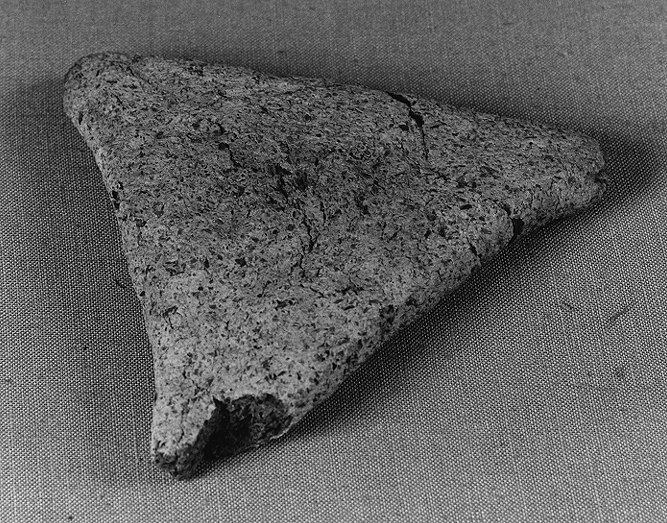
Triangular Loaf of Bread
Date: First Intermediate Period, Dynasty XI, reign of Mentuhotep II (c. 2008-1957 B.C.E.)
Material: Bread
Provenance: Deir el Bahari, Mentuhotep II's mortuary temple
This loaf of bread is approximately 4000 years old. It was placed with other objects under the foundation of Mentuhotep II's mortuary temple at Deir el Bahari in Western Thebes. The objects placed in foundation deposits for ancient Egyptian temples were intended to symbolically stabilize and protect the four corners and the boundary walls of the temple, because the temple itself was believed to be a microcosm of the universe. One reward gained from a stable universe was food in abundance. This loaf of bread symbolizes that value.
During the bread-making process, the grinding of flour and the mixing of dough, small stones and the ever-present sand became part of any bread which was made, whether for offerings or for domestic use. These gritty elements wore down the enamel of the teeth which led to abscesses. Cavities, caused today by refined sugar, were not the culprits in tooth loss in ancient Egypt.